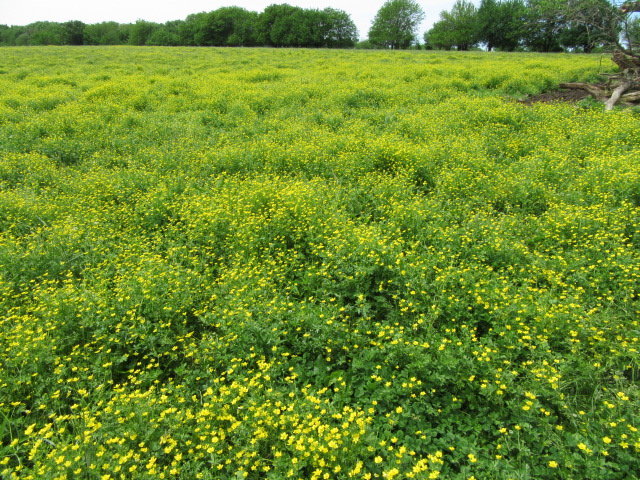
Ranunculus sardous (Hairy Buttercup) in a friends pasture on 5-22-22, #882-30.
Hello everyone! I hope this post find you all very well. It has been a while since my last post, but I am alive and well. I get busy doing this and that during the day then in the evening I watch something on the TV, sometimes longer than I want. Heck, I haven’t posted since April 24! I have been photographing wildflowers like before and am still finding a few new species on the farm. It seems odd how they just pop up. How did they get here and where did they come from?
I will start the post with the Ranunculus (Buttercup) then begin the update with April 29.
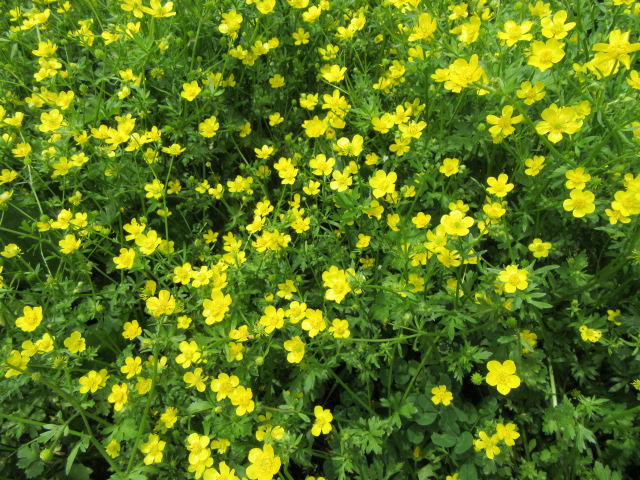
Ranunculus sardous (Hairy Buttercup) on 5-22-22, #882-31.
I did have a breakthrough with the Ranunculus (Buttercup) species here. I am pretty sure I have them figured out, but how sure is a secret. It sometimes seems “we” make things harder than they really are. I don’t want to point the finger at myself so I am saying “we”. My higher self is reminding me that “we” in this case means me, myself, and I… I then remind my higher self I don’t even know what my higher self really is. It just sounds good and makes me sound spiritual. I started writing a post about the Ranunculus, but it was saved to the drafts. You know how it is… I start writing a post about particular wildflowers and once they fade the post is out of date.
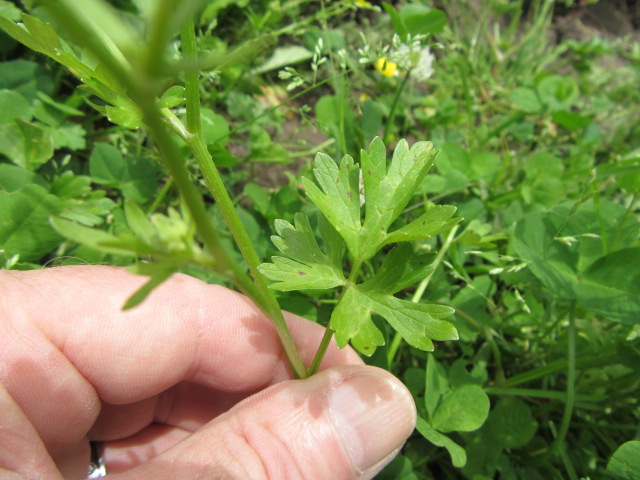
Ranunculus sardous (Hairy Buttercup) on 5-22-22, #882-36.
I had been feeding the cows at Kevin’s and noticed his main pasture was LOADED with what I assumed was probably Ranunculus hispidus (Bristly Buttercup) even though I didn’t think they grew like that. Fortunately I was mistaken because I learned something. When I was taking photos, I took some close-ups of the leaves, stems, flowers, and fruit. I had just been working on the pages of Ranunculus and was writing descriptions, so the descriptions of R. hispidus was fresh in my mind. SO, as I was taking photos of the leaves, I noticed something a bit off… The first two leaflets of R. hispidus leaves “usually” have small petiolules but these didn’t have any. Hmmm…. Also, the fruit, which I had disregarded before, were supposed to be different. SO, I took photos of the fruit to compare them with what was on the Missouri Plants website. USUALLY, flowers and leaves are enough to get a positive ID with most species. But since there are many Ranunculus species that look alike, you have to go further. Unfortunately, the close-ups of the fruit were blurry…
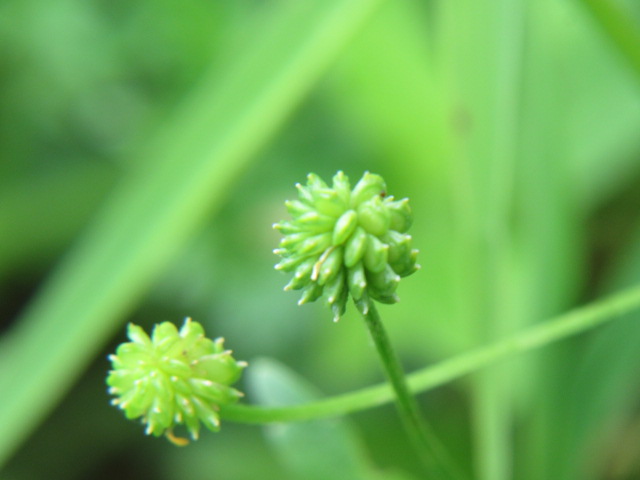
Ranunculus sardous (Hairy Buttercup) on 5-24-22, #883-21.
Later in the evening, I went to check the plants around the pond on my farm but I stopped at the gate by the barn to take photos of a colony of Ranunculus parviflorus. Then I took a few other photos on the way to the pond of this and that… I checked the leaves on the Ranunculus there and was SHOCKED to see the same as the plants at Kevin’s. The darn HUGE colony I had been stumped over for several years were the same!!! By then, it was getting to dark to take good photos. On the 24th I was able to take some good photos, even of the fruit, which confirmed Ranunculus sardous, commonly known as Hairy Buttercup. The fruit of Ranunculus hispidus have long tips (beaks), while R. sardous are more stubby with short tips… Then I realized most of the photos of what I thought were R. hispidus were actually R. sardous. The only R. hispidus were taken in 2020 in another area on Kevin’s farm across the highway along a creek in a shady area. Ranunculus hispidus prefers a damper and less sunny habitat than R. sardous. That’s why I thought it was odd for them to ge growing in mass right out in the sun in the pasture. Ranunculus species are toxic to cattle but usually won’t eat them when they have other vegetation to graze on. Ranunculus sardous can take over when pastures are over-grazed…
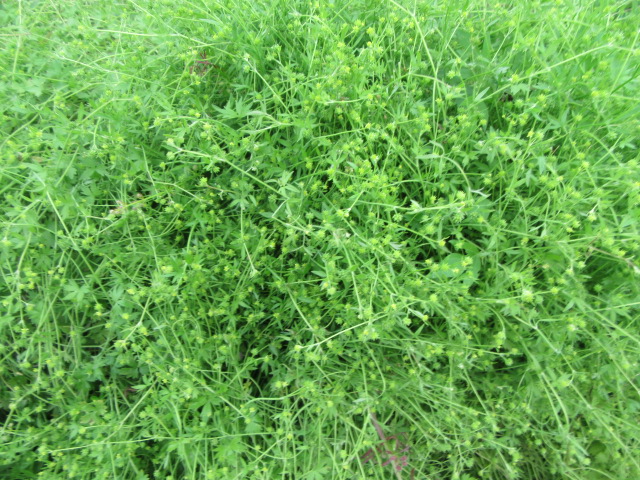
Ranunculus parviflorus (Stickseed Crowfoot or Smallflower Buttercup) on 5-24-22, #883-10.
There are some good-sized clumps of Ranunculus parviflorus, known by the common names Stickseed Crowfoot and Smallflower Buttercup (and probably others) growing behind the barn and around the pond.
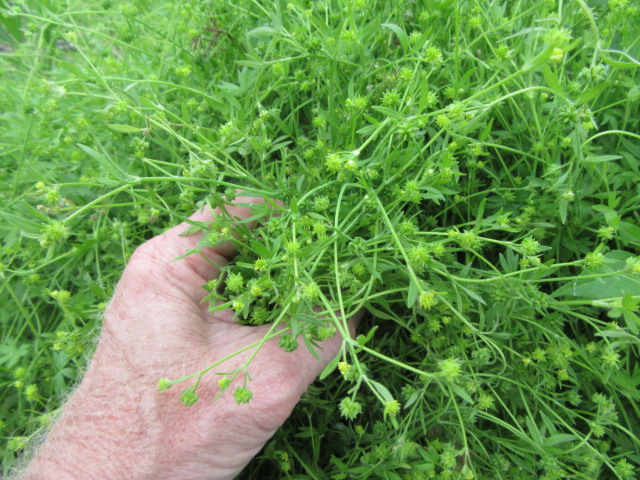
Ranunculus parviflorus (Stickseed Crowfoot/Smallflower Buttercup) on 5-24-22, #883-11.
Ranunculus parviflorus grow in thick mats and their long stems get tangled up. No mistaking this species here for sure.

Ranunculus parviflorus (Stickseed Crowfoot/Smallflower Buttercup) on 5-24-22, #883-12.
The weird flowers and fruit are very small…
Ranunculus species can be somewhat difficult if you are in an area where you have several species that are very similar. The Missouri Plants website lists 13 species of Ranunculus in Missouri and I thought I had identified six here on my farm and R. sardous wasn’t even in the running. After several years of deliberation, I think there are only three which includes the earlier flowering R. abortivus (Small-Flowered Buttercup/Crowfoot), Ranunculus parviflorus, and now R. sardous… The others I thought were here are likely R. sardous.
There will be more photos and descriptions on the page once I get it finished. I worked on writing descriptions during the winter for plants, but when May came I started taking more photos and pretty much skipped R. parviflorus. I will get back to writing descriptions and making updates once we get an “F” in October…
This post is catch up on new species I found since the last post until now but I have thrown in a few previously identified species as well. Previously identified species, if they have a page, are highlighted in green which you can click on to go to their own pages if you want to read more and see more photos. Some of those pages don’t have descriptions… It is a work in progress… 🙂
Starting with April 29…
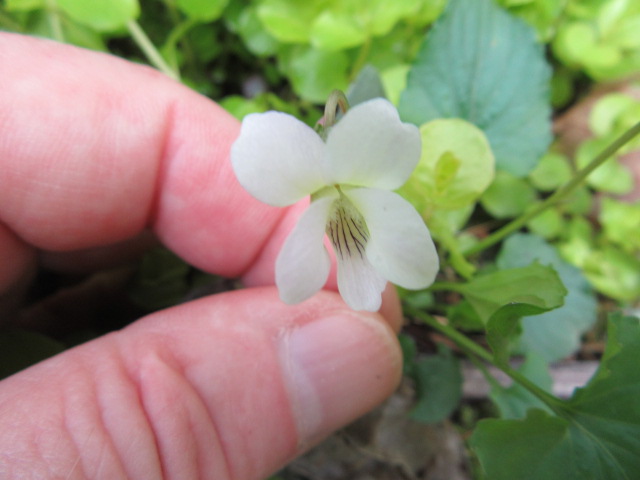
Viola striata (Cream Violet) on 4-29-22, #875-38.
I really enjoy finding new species of Violets and this Viola striata (Cream Violet) just happened to come up in the north bed close to the Hosta ‘Empress Wu’. The Missouri Plants website says it is the only “stemmed” violet in Missouri with white flowers.
MAY 1…
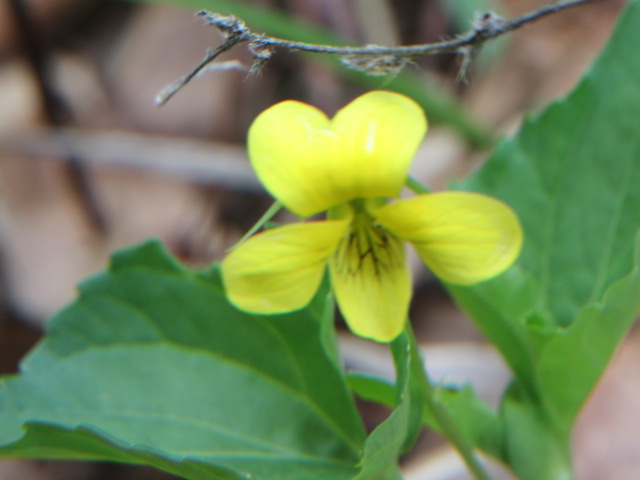
Viola pubescens (Downy Yellow Violet) on 5-1-22, #877-16).
Then, on May 1, I found the first Viola pubescens (Yellow Downy Violet) on my side of the fence in the back of the farm. The first one I found was along the creek on the other side of the fence and on a friend’s farm in 2020. I went back several times to see if I could find it again to photograph its fuzzy fruit. Unfortunately, I have yet to find it the second time… I am going to start taking old electric fence posts to mark locations… You can go to the plants page to see the fruit, but I haven’t written descriptions.
MAY 5…
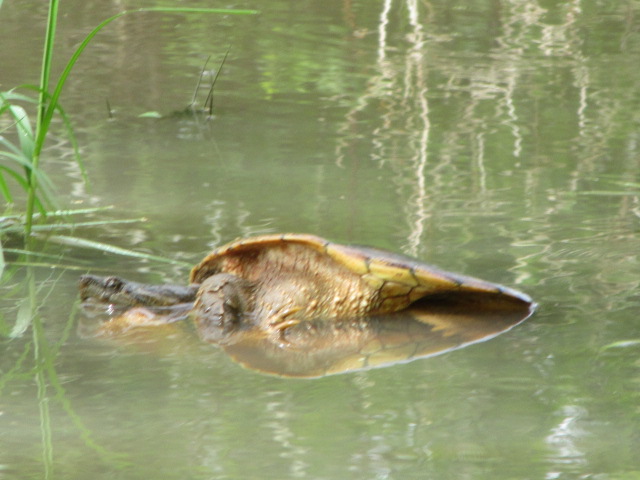
Chelydra serpentina (Common Snapping Turtle) on 5-5-22, #578-9.
On May 5, I was walking around the back pond and this snapping turtle was being really weird. It was putting its head in the water and then back up, kind of like it forgot how to swim. The water was pretty shallow and just a few days earlier it was almost dry. After a few minutes, another turtle shot out from under it. Hmmm… Like I have said before, it would have made a great video…
MAY 12…
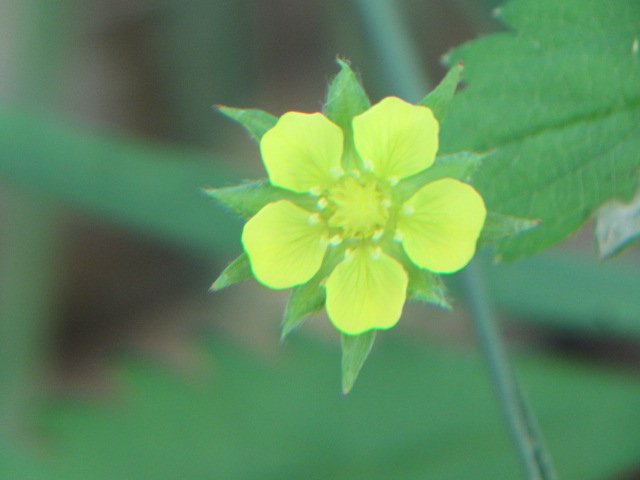
Potentilla simplex (Common Cinquefoil) on 5-12-22, #881-6.
Almost as exciting as finding a new species, is one that returns in the same area the second year. Well, it is highly likely that the Potentilla simplex (Common Cinquefoil) has been coming up along the fence in the southeast part of the farm for several years. I just found it last year… Unlike its cousin, Potentilla recta (Sulfur Cinquefoil), this one has much smaller and brighter yellow flowers, and it has trailing stems. The southeast corner of the back pasture/hayfield is the only area I have found it. The Potentilla recta grow everywhere else.
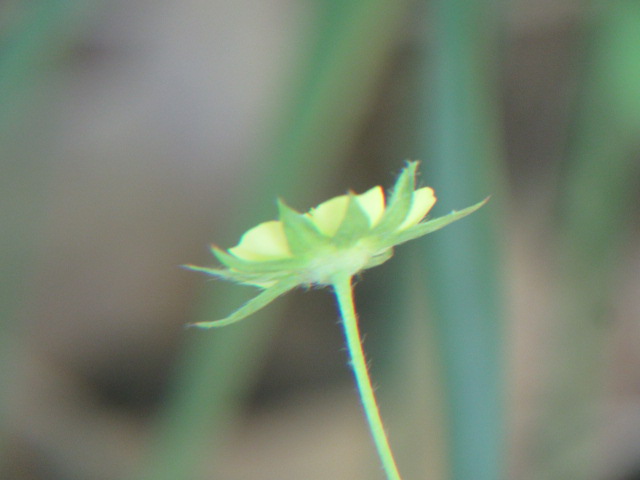
Potentilla simplex (Common Cinquefoil) on 5-12-22, #881-9.
The flowers are rather flat. Some websites say the green calyx has 5 triangular tips that are a little shorter than the petals. The Missouri Plant’s website show flowers with multiple sepals, but they are shorter than the petals.
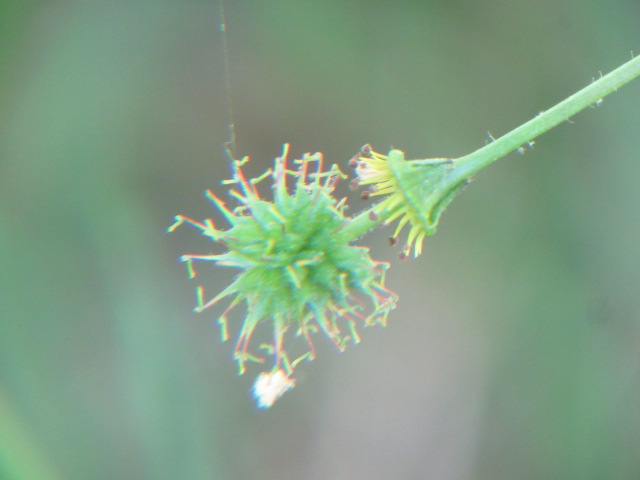
Potentilla simplex (Common Cinquefoil) on 5-12-22, #881-10.
I think its way of fruiting to be quite strange since the flowers were so flat looking. I have not seen any species except this one whose “receptacle” comes out of the flower. OK, technically, with this species (or genus) it is the hypanthia (hypanthium) which is a tubular or cup-like receptacle on which the stamens, petals, and sepals are borne (Missouri Plants glossary). Hmmm… Looking at the above photo, you try to make sense of that description. It looks like the petals and “cup” the sepals grow from slid down or it grew a longer peduncle… Anyway, I am glad I got a good shot as confusing as it is. 🙂
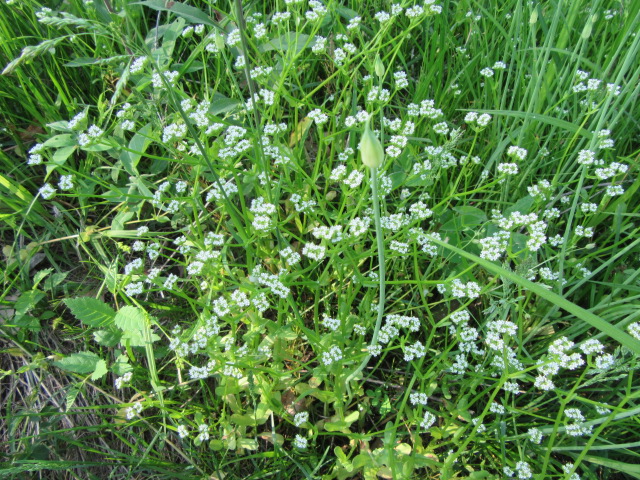
Valerianella radiata/Valeriana woodsiana (Beaked Corn Salad) on 5-12-22, #881-16.
I also ran across a few nice-sized colonies of Valerianella radiata/Valeriana woodsiana (Beaked Corn Salad) in the pasture. I first identified this species in the area north of the chicken house in 2020. This is certainly a neat plant with small clusters of white flowers and weird leaves (especially the upper leaves.
Although Plants of the World Online says the species is Valeriana woodsiana, basically all other websites and databases say Valerianella radiata. I contacted the editor of Kew and he said Valerianella species have been moved to Valeriana. Sometimes I ask him if he is sure… Some botanists disagree and the curators of some databases don’t either.
ANYWAY…
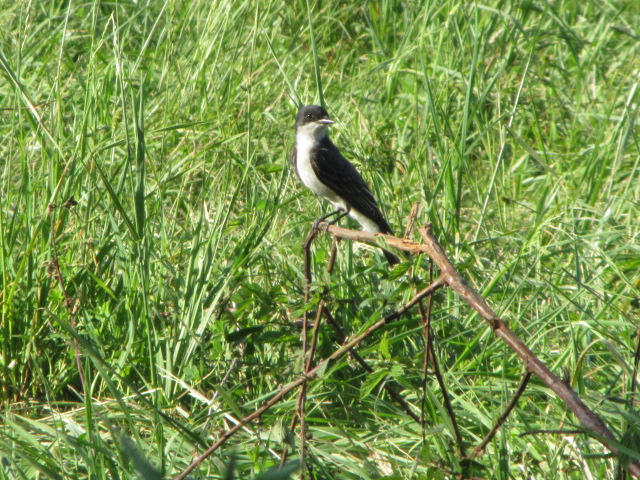
Tyrannus tyrannus (Eastern Kingbird) on 5-12-22, #881-13.
I continued my walk along the edge of the south hayfield when this bird came along for a visit. At first, it resembled a male Purple Martin, but as I looked at it close-up with the camera I realized it wasn’t. I found out it was an Eastern Kingbird (Tyrannus tyrannus) which I had never seen before. Rather than flying high in the air, this bird flies just over the grass searching for low-flying insects.
MAY 22…

Thlaspi arvense (Field Penny-Cress) on 5-22-22, #882-44.
SOOOO, on May 22 when I was talking to myself about the Ranunculus, I saw this oddity sticking up in the Ranunculus parviflorus next to a gate by the barn. Previously in the day, I had photographed Lepidium virginicum (Poor Man’s Pepper) which had MUCH smaller fruit. Heck, it is so common along my driveway I hadn’t even bothered to identify it until now… Well, the plants along the driveway get mowed off so I photographed a much larger one on a friend’s farm. It was the same day I photographed the Ranunculus that turned out to be R. sardous on Kevin’s farm, which is why I was talking to myself. I was walking through the gate next to the barn and there it was, sticking up through a clump (understatement) of Ranunculus parviflorus… There were NO leaves on this stem so I took a couple of shots of the fruit then went on to the pond to check out the Ranunculus there… Later in the evening, I drug and dropped the photo on iNaturalist and it suggested a species by the name of Thlaspi arvense, also known as Field Penny-Cress…
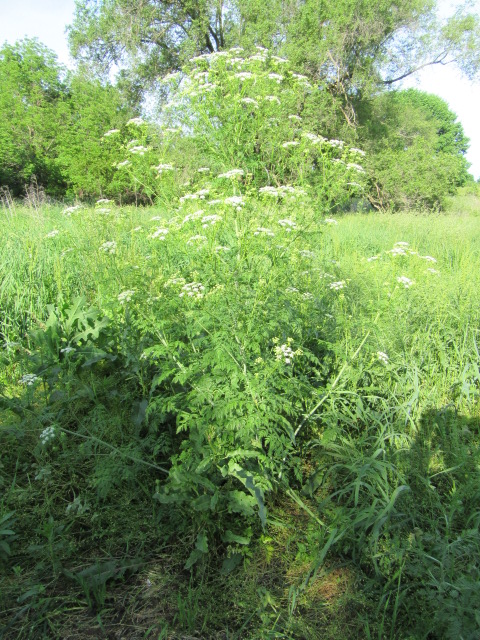
Conium maculatum (Poison Hemlock) on 5-22-22, #882-2.
A friend of mine (Kevin) sent a photo of a HUGE colony of Conium maculatum (Poison Hemlock) in 2021 from one of his pastures. I see them all along the highway and backroads but had never seen any up close and personal. Then in April, I saw one growing along the edge of the yard of the church next door that had been mowed off. On May 1, I spotted one right behind my own yard! It had no flowers, so I thought I would let it grow and then cut it down after it bloomed. Then on May 22, I noticed it had flowered so I went to take a few more photos. The plant was HUGE, taller than me. This is a plant you should be careful with as it is what killed Socrates… I also noticed a few more close to the same area. Time went by and the next thing I knew the hay was cut and they got baled up…
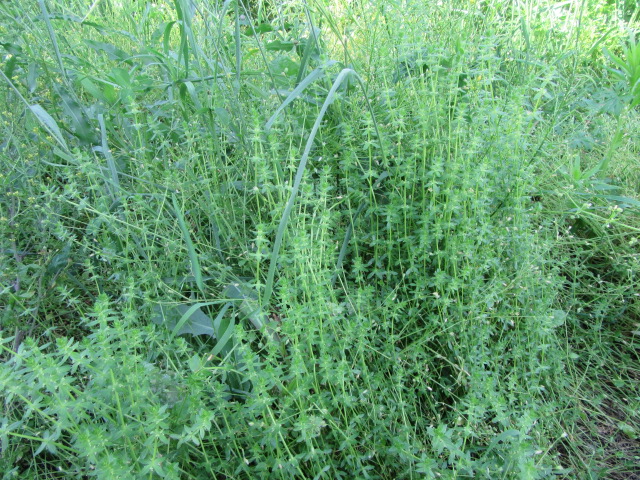
Cruciata pedemontana (Piedmont Bedstraw) on 5-22-21, #882-4.
Previously, on May 1, I photographed this plant when it was much smaller and submitted it to iNaturalist. I thought I had identified it before but apparently not. It turned out to be a large cluster of Cruciata pedemontana, commonly known as Piedmont Bedstraw… It is growing here and there in a few somewhat bare spots.
I am almost certain I identified a similar plant growing at the base of a sycamore tree in my yard last year. Hmmm… I have to do some checking.
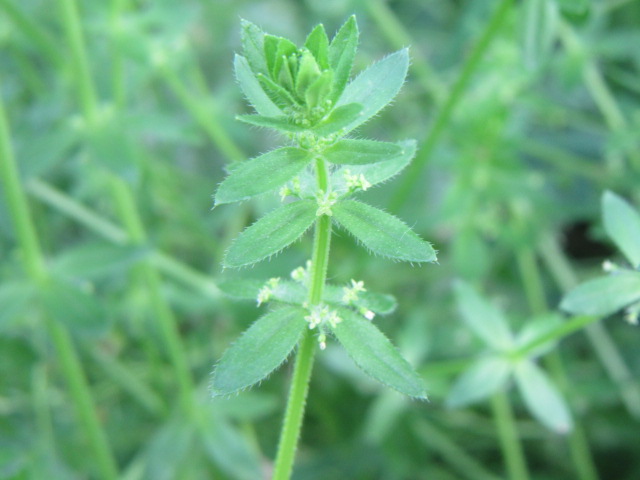
Cruciata pedemontana (Piedmont Bedstraw) on 5-22-21, #882-5.
Now, if you look at the above close-up photo it may remind you of the dreaded Galium aparine, also known as Cleavers or Catchweed Bedstraw. Of course, it is a plant we love to hate because of those darn stick-tight seeds that stick on our clothing (the entire plant will stick to you even when green). In fact, the species name of this one used to be Galium pedmontanum… and it doesn’t appear to be sticky…
Cruciata pedemontana is an introduced species that Missouri Plants says was unknown in Missouri when Steyermark’s Flora of Missouri was published in the mid-1970’s. Since then, it has spread like wildfire and was reported in 43% of the counties in Missouri in 2020. The map on the USDA Plants Database is completely whacky for this species…
MAY 24…
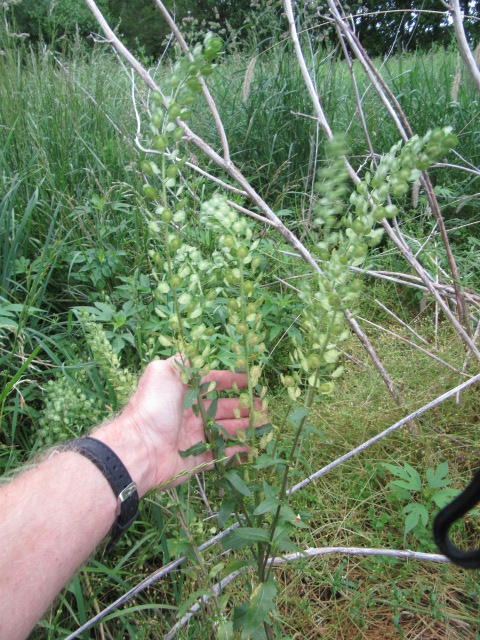
Thlaspi arvense (Field Penny-Cress) on 5-24-22, #883-23.
Then, on May 24 after taking more photos of the Ranunculus, I started walking in an area north of the pond. LOW AND BEHOLD I found a good-sized colony of Thlaspi arvense! Usually when I am walking in this area I am 20′ or so north and headed to the main hayfield which is why I hadn’t noticed them earlier.
Thanks to Dave’s Garden, I learned the scientific name is pronounced THLAS-pee ar-VEN-see. Hmmm…
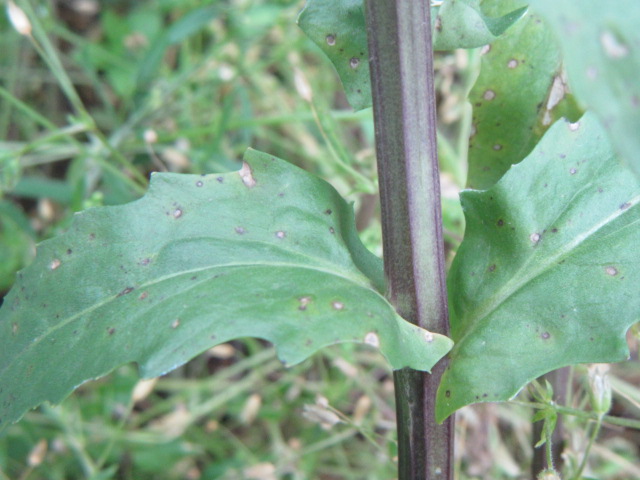
Thlaspi arvense (Field Penny-Cress) on 5-24-22, #883-26.
These plants still had leaves but they can be absent at flowering. I always like clasping leaves. Just look at the ribbed stems!
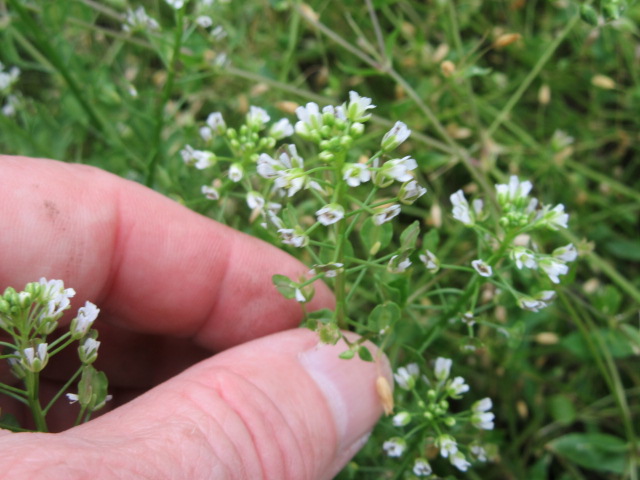
Thlaspi arvense (Field Penny-Cress) on 5-24-22, #883-30.
A few feet away was several smaller plants that were still in flowering mode. As you can see the flowers are very tiny. It was windy, so I had to take A LOT of photos!
MAY 25…
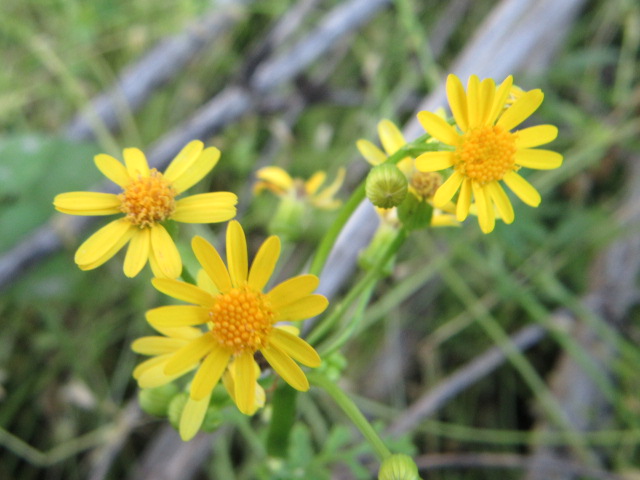
Packera glabella (Butterweed) on 5-25-22, #884-4.
On May 25 I was walking in an area behind the chicken house that had been covered in chickweed. I had never seen it so insane! Anyway, I spotted this yellow flower sticking up through the chickweed so I decided to check it out. Hmmm… It was definitely a new species I hadn’t seen before! Sticking up through the chickweed was a single plant of Packera glabella also known as the Butterweed, Cressleaf Groundsel, and Yellowtop. Missouri Plants lists four species of Packera in Missouri and says they can be very hard to tell apart and there is A LOT of controversy which is which. According to the maps on the USDA Plants Database, of the four found in Missouri, three are found in Pettis County where I live but none in Henry County (which is across the street). Not that the USDA maps are up-to-date, but you can still get a good idea. You can zoom in on your state and see the counties the species was found in. According to BONAP (Botia of North America Program), they provided maps for the USDA and all I have seen were updated in 2014… A LOT has changed since 2014!
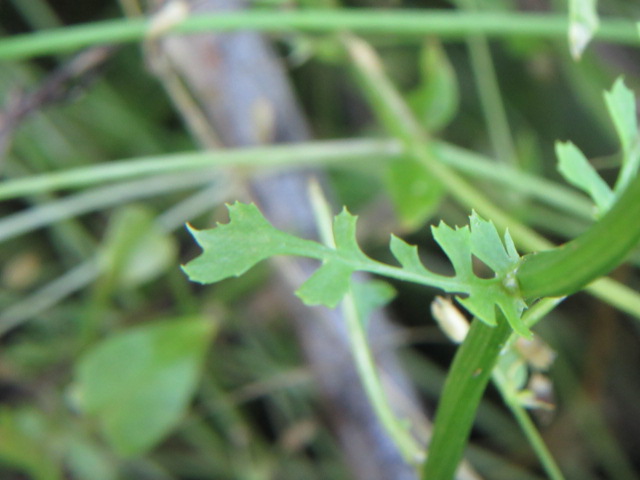
Packera glabella (Butterweed) on 5-25-22, #884-5.
There weren’t many leaves and what there were had been chewed on. Fortunately, judging my the leaves and stem, I believe this plant is definitely Packera glabella. The other two possibilities, Packera obovata (Groundleaf Ragwort) and Packera plattensis (Prairie Groundsel) have different leaves and one is very hairy…
The USDA Plants Database lists 73 species of Packera in the United States and Canada. The species in the genus were formerly species of Senecio…
MAY 28…
I decided I needed to go to the back of the farm again to check the progress of the Elephantopus and the asters behind the back pond. I didn’t want to write the “S” word. OK, I’ll do it anyway… The Symphyotrichum lateriflorum and S. ontarionis. I can’t spell those names without looking them up let alone pronounce them! Anyway, I went the same route as on May 25 behind the chicken house.
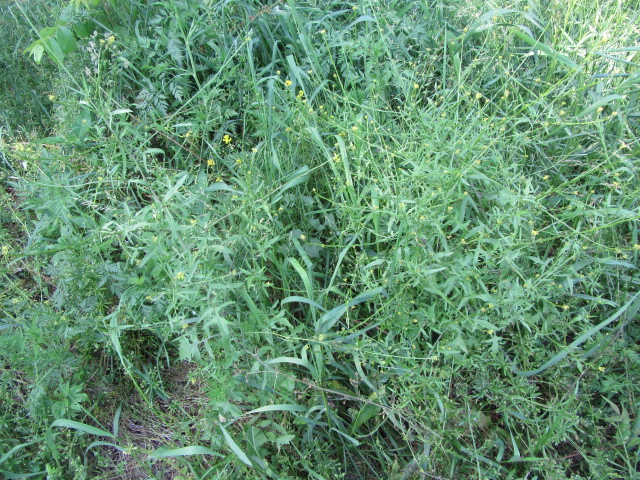
Sisymbrium officinale (Hedge Mustard) on 5-28-22, #885-38.
I crossed the ditch and was surprised to see the Sisymbrium officinale (Hedge Mustard) had moved to a new location! It was in the vicinity where I found the Field Penny-Cress last year, but it was nowhere to be found in 2022.
In May 2021 I was having difficulties with my camera and it completely went bonkers for good at the end of a wildflower walk with my son. I had already taken quite a few photos with much difficulty and on the way back to the house I ran across a patch of Sisymbrium officinale which was a new species. I tried AGAIN to get the camera to work and it wouldn’t. The viewfinder was completely shot! I had watched a video on YouTube about replacing it, but just watching all that had to be done was exhausting in itself. BUT, Nathan is always eager to take photos, so he showed me how to take photos with his cell phone. He sent them to me once we got in the house but they were HHHHUUUUGGGGEEEE! It took a long time to download all of them and the photos filled my computer screen! At least I did get the species identified… SO, I was very glad to find them again on May 28th, just around 30′ or so west from where they were in 2021 and maybe 20 feet north of where the Field Penny-Cress is located.

Sisymbrium officinale (Hedge Mustard) on 5-28-22, #885-40.
While the plants are young and not flowering, the leaves could easily be mistaken for a species of Lactuca of even a non-spiny Cirsium. The lower leaves are fairly broad with several lateral lobes.
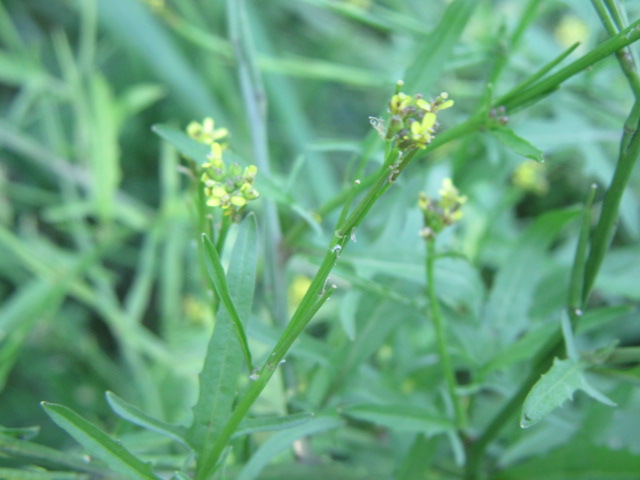
Sisymbrium officinale (Hedge Mustard) on 5-28-22, #885-44.
This species is a member of the plant family Brassicaceae and has very small yellow flowers. The odd thing about this species is that the fruit (seed pods) lay parallel to the stems…
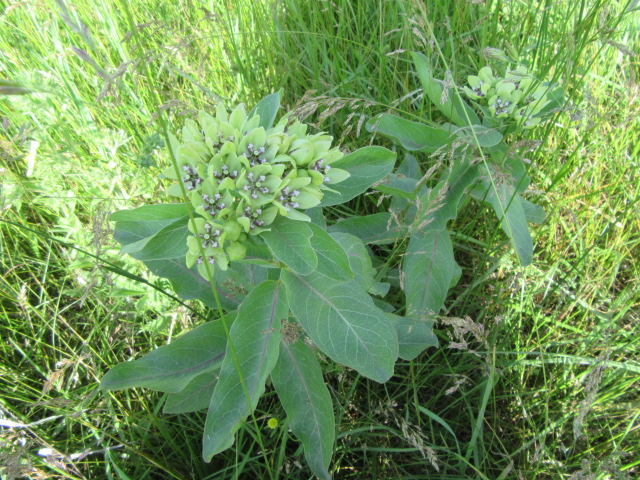
Asclepias viridis (Green Milkweed) on 5-28-22, #885-1.
Toward the end of the main hayfield, I ran across an Asclepias viridis (Green Milkweed). I have several milkweed species on the farm but this was the first time I had seen the Green Milkweed here.
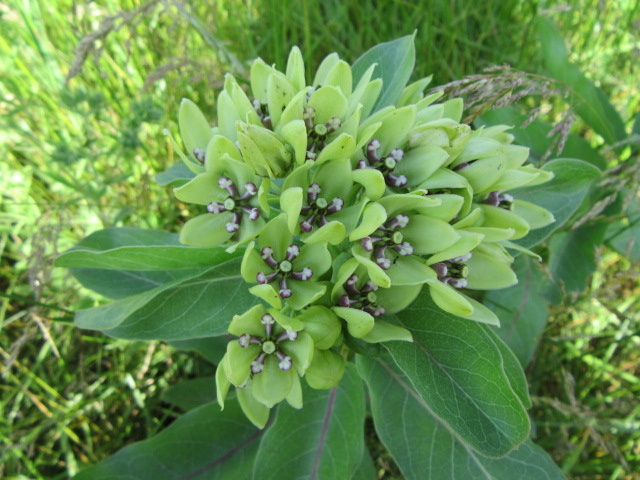
Asclepias viridis (Green Milkweed) on 5-28-22, #886-2.
These are one of my milkweeds I suppose because of the color. I just went back to this plant’s page and realized I need to work on descriptions. GEEZ! The flowers are quite complex…
I made my way to the back of the pond along the drainage ditch to check out the, ummm…
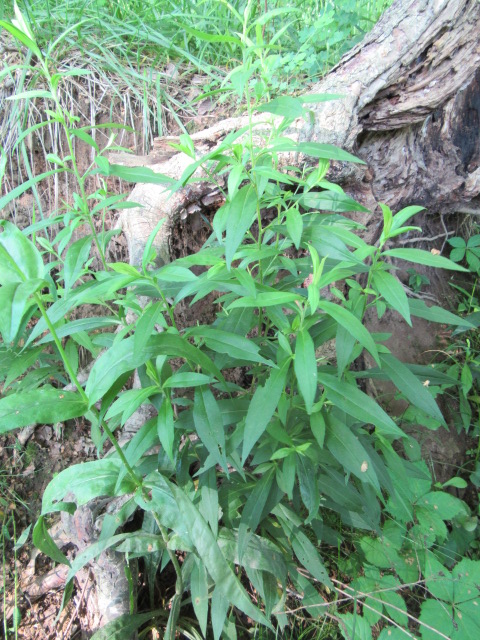
Symphyotrichum lateriflorum (Calico Aster) on 5-28-22, #885-45.
The anticipation is terrible since the Symphyotrichum lateriflorum (Calico Aster) won’t flower until August or later! There is another species, S. ontarionis (Ontario Aster), that is also behind the pond but farther south. Both are so similar they are hard to tell apart. The arrangement of the flowers and hairs on the leaves are somewhat different. I hadn’t noticed them until last fall and one of the curators on iNaturalist filled me in on how they were different and both species became research grade. You remember we had a late “F” last fall, otherwise, I wouldn’t have even noticed them. There are quite a few of both species growing behind the pond, or should I say “ponds” since there are two side by side. The Calico Aster is growing along the drainage ditch behind the old pond, while the Ontario Aster is growing along the fence behind the other. I think probably grandpa had a new pond made with the intention to make one big pond. Likely, the new pond filled with water before it could be finished because of a spring…
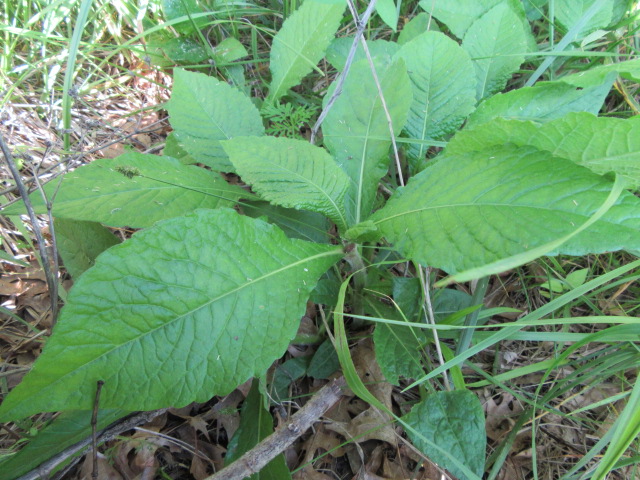
Elephantopus carolinianus (Leafy Elephant’s Foot) on 5-28-22, #885-13.
I walked on past the area where the Ontario Asters are to the location I found the Elephantopus carolinianus (Leafy Elephant’s Foot) last fall. I didn’t know they were there until they had gone to seed and the leaves had dried up. The plant’s looked suspicious, even dead, and I realized what they were. Made me scratch my head for a few minutes because, until 2021, the only Elephant’s Foot I had seen was on a friend’s mother’s farm in 2019. Then last year, in October, I ran across a single plant in the south hayfield. Well, after a couple of days, I went to mark its location and couldn’t find it again. SO, I was surprised I found it behind the pond and I did mark the location. I was glad they had come up again in 2022. Then came another surprise, but that is for another day…
Then, I walked toward the southeast part of the farm. You never know what you will run across…
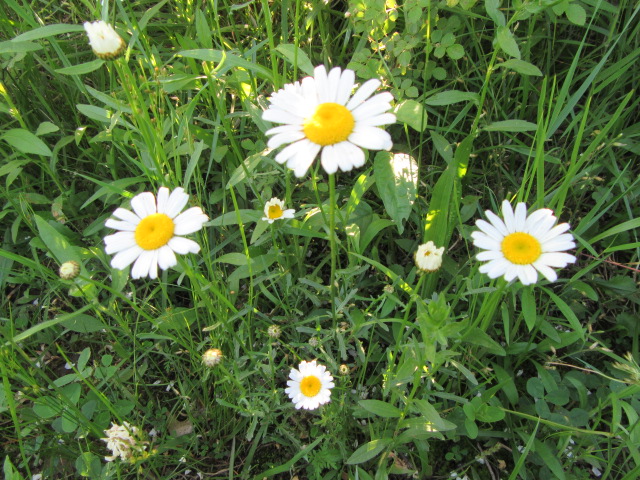
Leucanthemum vulgare (Ox-Eye Daisy) on 6-28-22, #885-22.
I was walking along the fence and spotted a nice colony of Leucanthemum vulgare (Ox-Eye Daisy)… Hmmm… They were on the other side of the fence behind a Multiflora Rose bush. I first identified this species on Kevin’s farm north of town in 2019, then I found them in the hayfield here in 2021. They are pretty neat plants, so I crawled through the fence to get a few more photos.
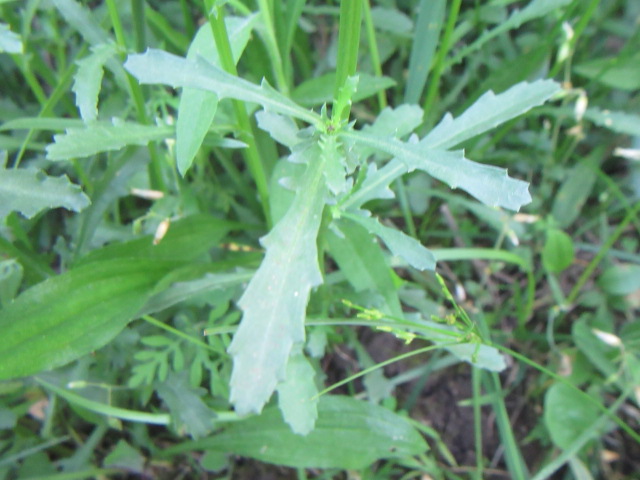
Leucanthemum vulgare (Ox-Eye Daisy) on 6-28-22, #885-25.
They have neat leaves…
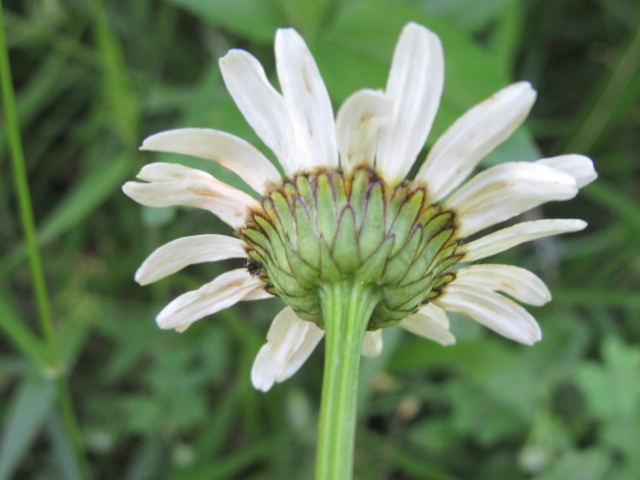
Leucanthemum vulgare (Ox-Eye Daisy) on 6-28-22, #885-27.
Plus their involucral bracts make a great photo…
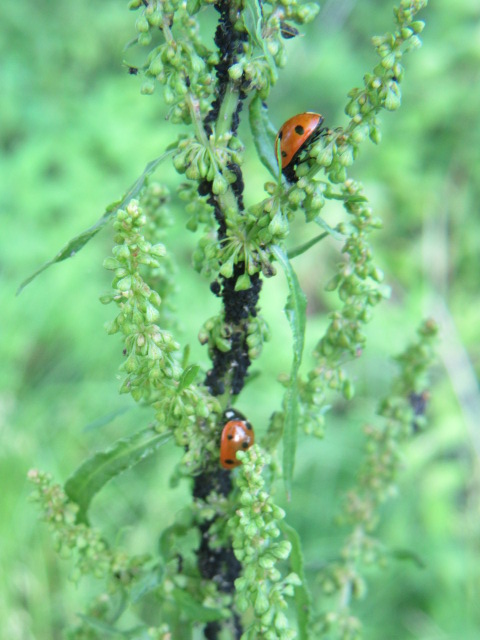
Coccinella septempuncata (Seven-spotted Lady Beetle) on 5-28-22, #885-12.
I ran across a Rumex crispus (Curled Dock) with aphids being fed on by several Seven-Spotted Lady Beetles (Coccinella septempuncata). I had to take a lot of photos to get one good one. Thank goodness for Lady Bugs always at work…
MAY 29…
I decided to go to the Katy Trail next to the farm to walk around in the trees again to check on the ferns. Yeah, most people walk the trail so I have to be quiet if someone is coming. I may scare the crap out of someone. GEEZ!
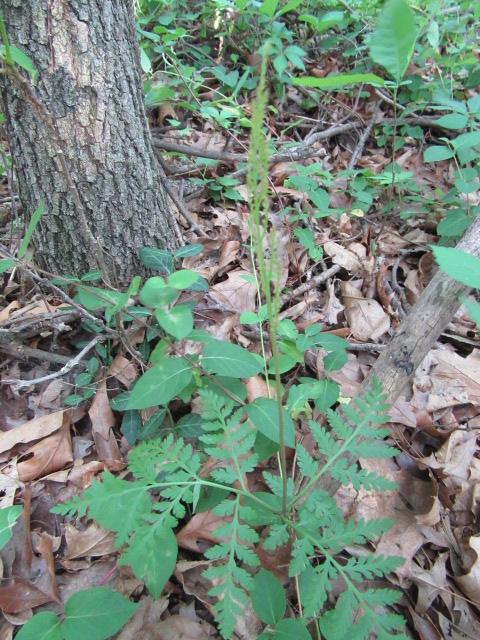
Botrypus virginianus (Rattlesnake Fern) on 5-29-22, #886-1.
I did find several Botrypus virginianus (Rattlesnake Fern) but I didn’t find any Sceptridium dissectum (Cutleaf Grapefern). I wanted to photograph the Rattlesnake Fern in flower, so I was glad that mission was accomplished. I have been wondering if I should dig some up in the spring and bring them home with me. Walking through the trees along the trail is not easy when the underbrush starts taking off.
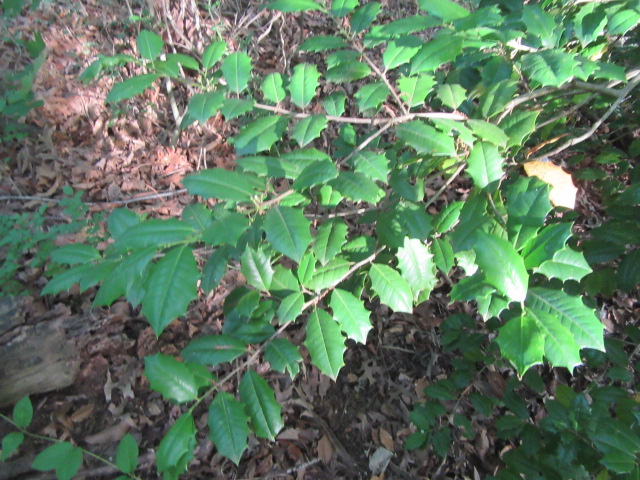
Ilex opaca (American Holly) on 5-29-22, #886-3.
Hmmm… I ran across a couple of Ilex opaca (American Holly) trees which I thought was quite odd. What was a holly tree doing in the brush along the trail. According to the Missouri Department of Conservation, there are four species of Holly that grow in the wild in Missouri. The other three species lack spiny leaves. When I lived at the mansion in Mississippi, the shrubs in front of the house were holly. I kept them trimmed back and always looked like I had been in a cat fight when I was finished. There was also a tall holly tree in the back yard. They can grow to around 50′.
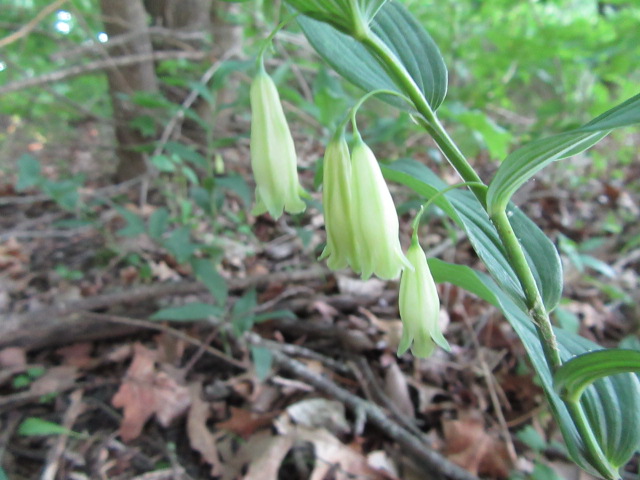
Polygonatum biflorum (Smooth Solomon’s Seal) on 5-29-22, #886-6.
Then I ran across a Polygonatum biflorum (Smooth Solomon’s Seal) that was actually blooming. The plants along the road in front of the pasture are always in bud or the flowers are closed.
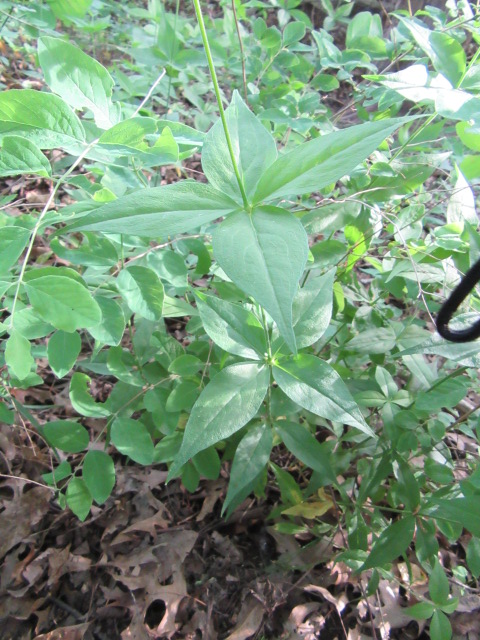
Silene stellata (Starry Campion) on 5-29-22, #886-14.
There are quite a few Silene stellata (Starry Campion) in the woods along the trail. I first identified this species from Kevin’s secured woods in 2020 but I have yet to see their flowers. According to Missouri Plants, they flower from June through September. I better get back to the trail…
I walked back home after I left the trail. It was about 8 PM and still light enough to get a few photos I needed.
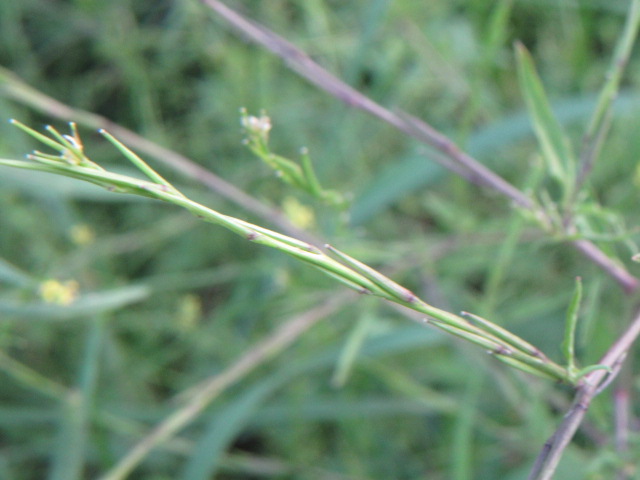
Sisymbrium officinale (Hedge Mustard)on 5-29-22, #886-16.
I wanted to get a photo of the fruit (seed pods) of the Sisymbrium officinale (Hedge Mustard) to show how they lay parallel to the stems. The other species in the family kind of hang outward.
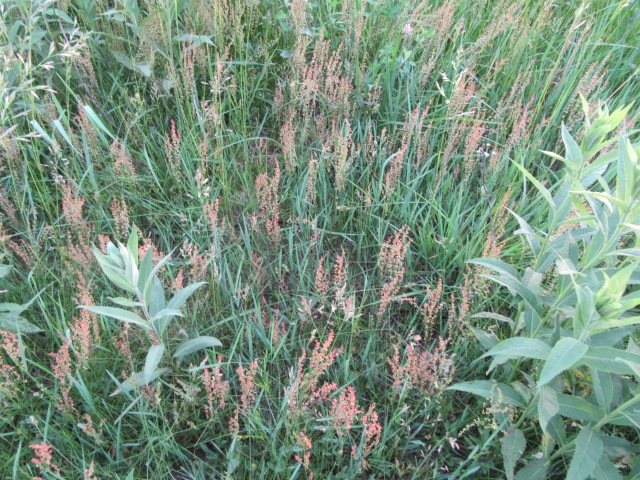
Rumex acetosella (Sheep Sorrel) on 5-29-22, #866-7.
I then walked to the back of the farm again where I found a good-sized colony of Rumex acetosella (Sheep Sorrel). I first identified this species from a patch growing in the yard in 2020. A while back, I ran across HUGE colony along a back road north of town. This species can become very invasive!
I will end this post and start working on part 2 which is for plants I photographed in June.
Until then, be safe, stay positive, and always be thankful!













